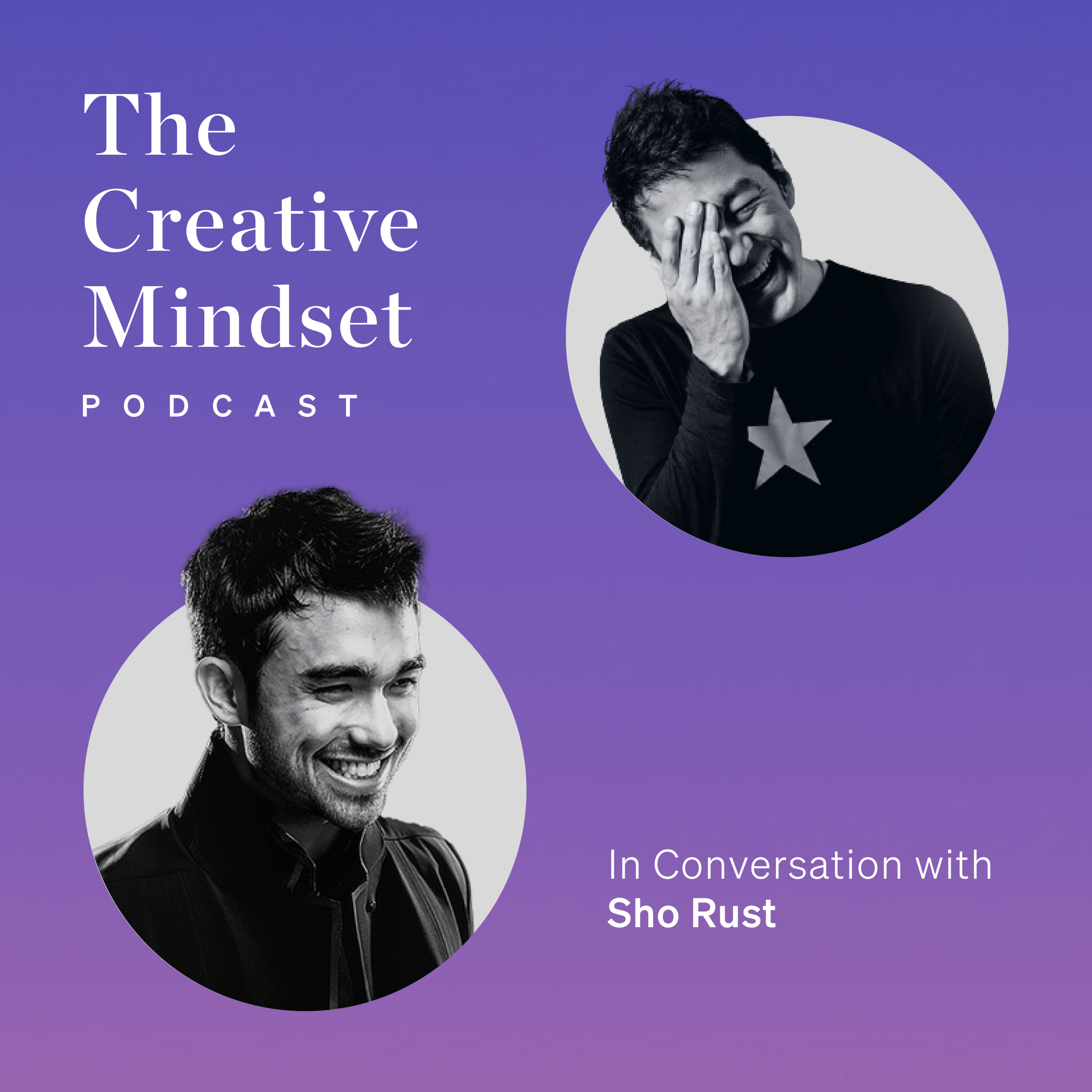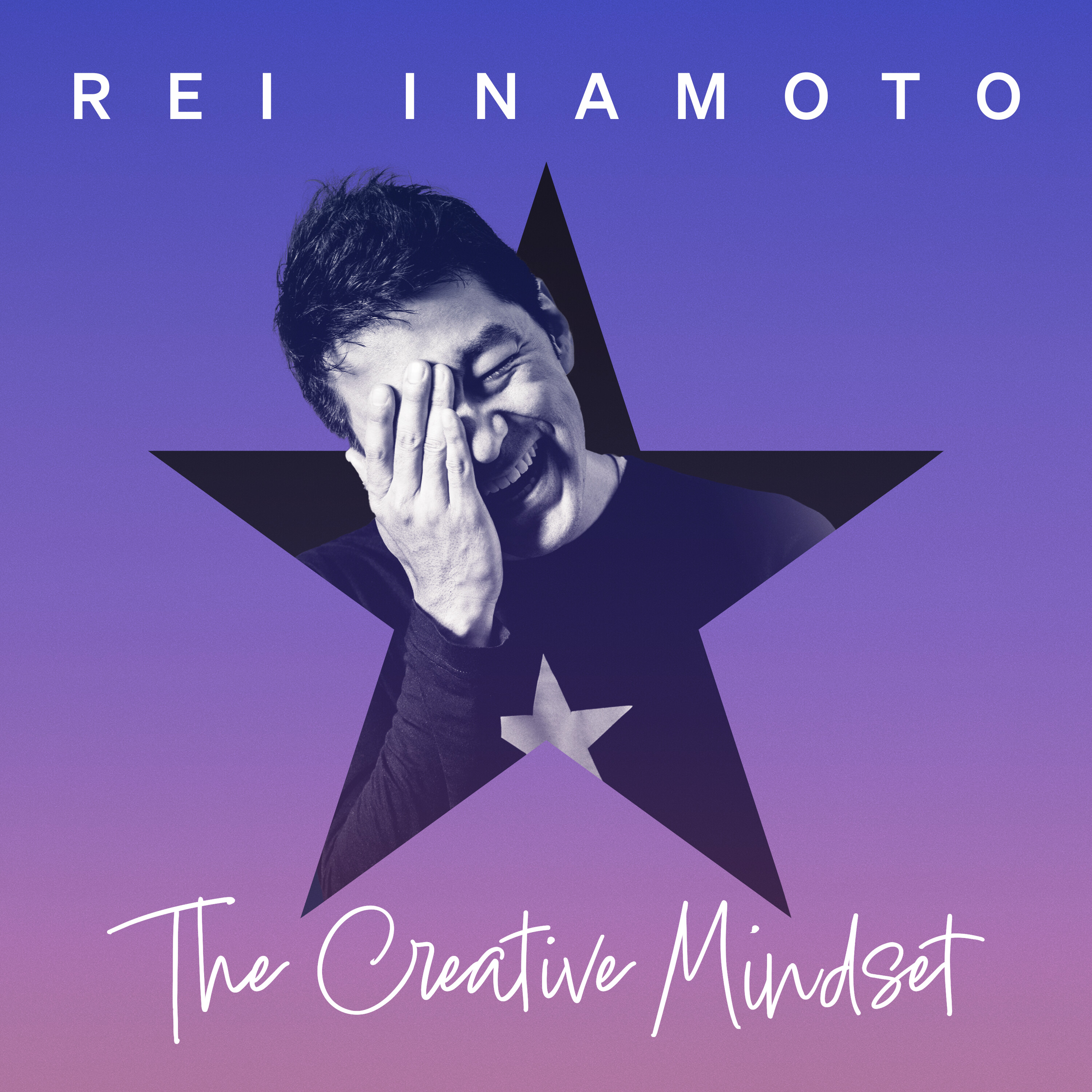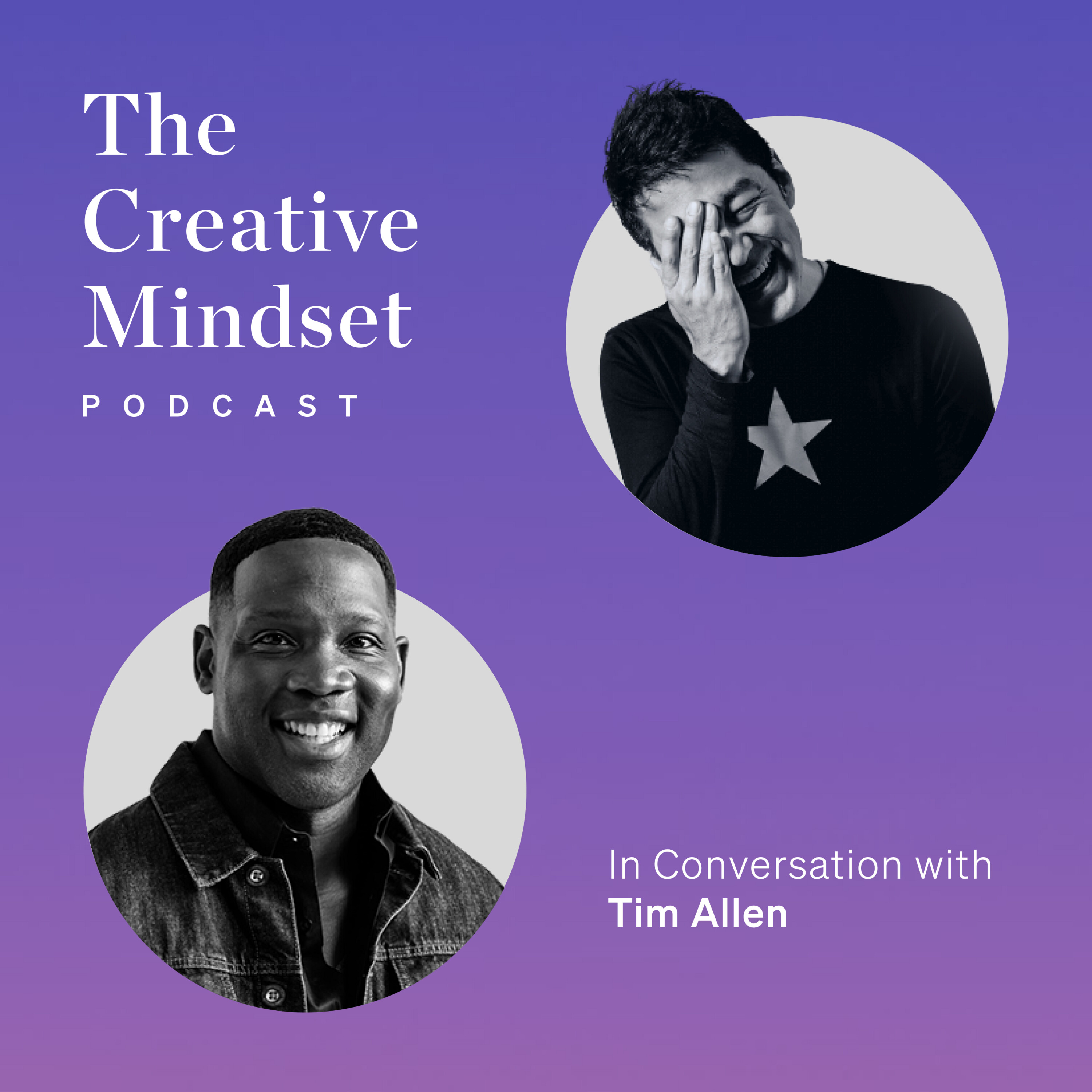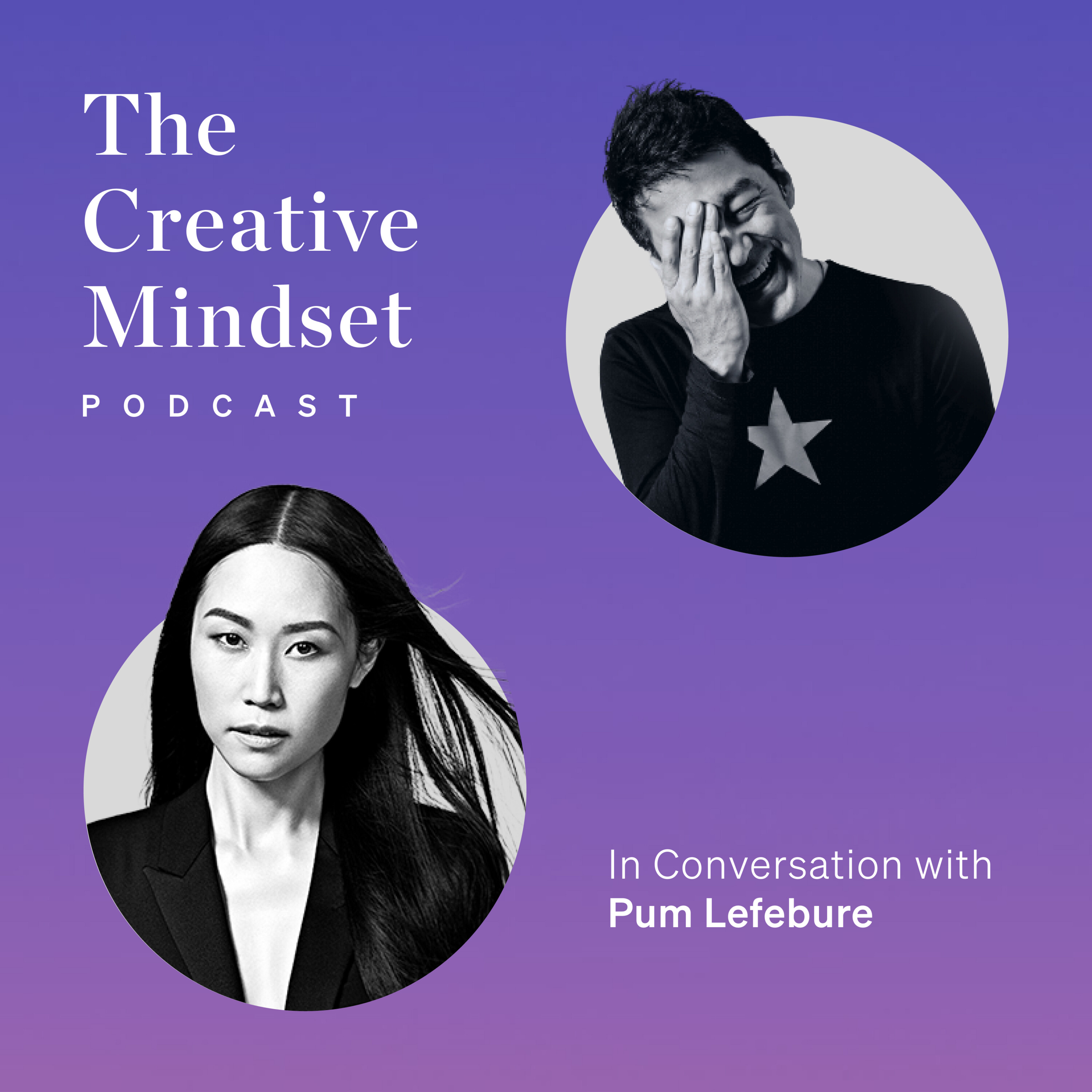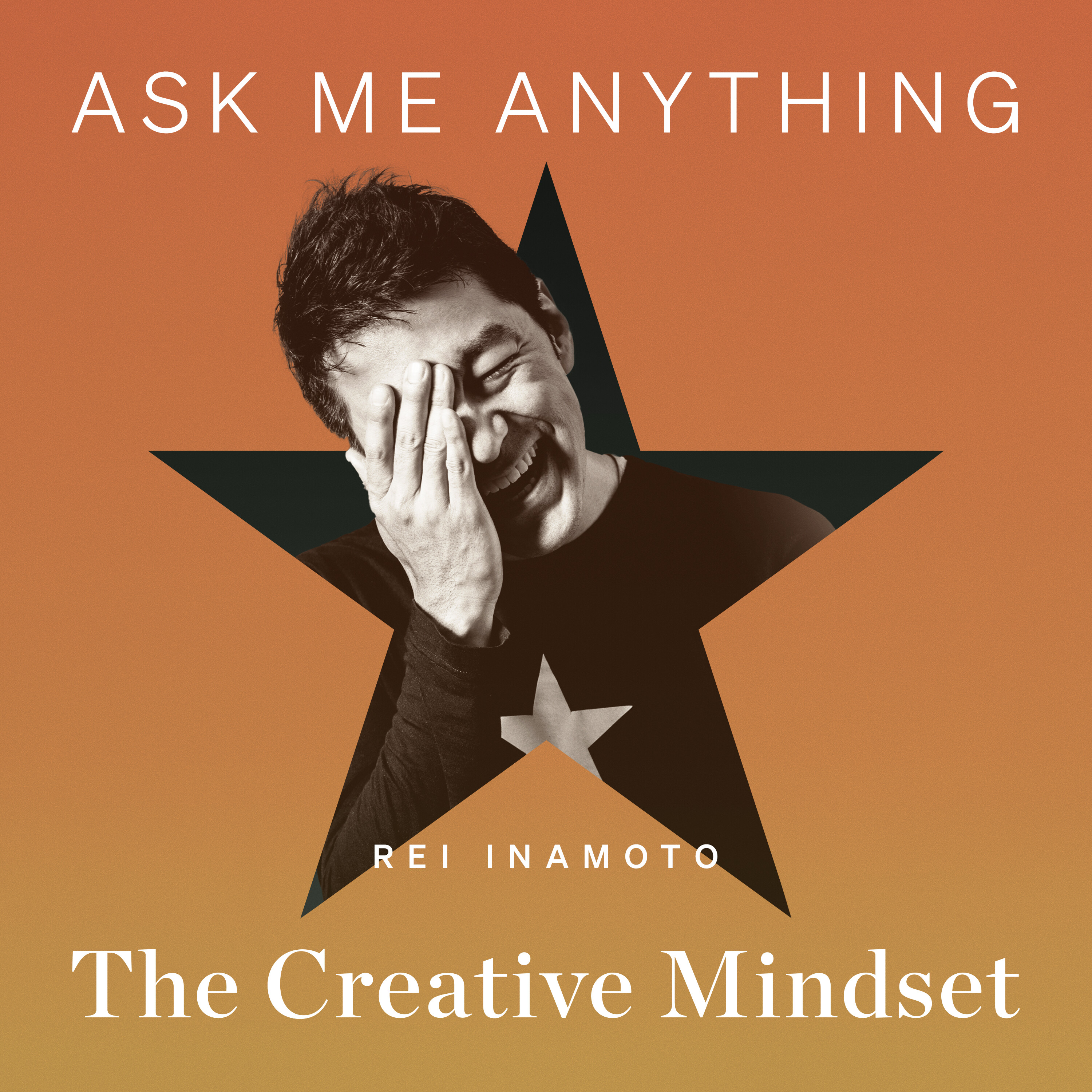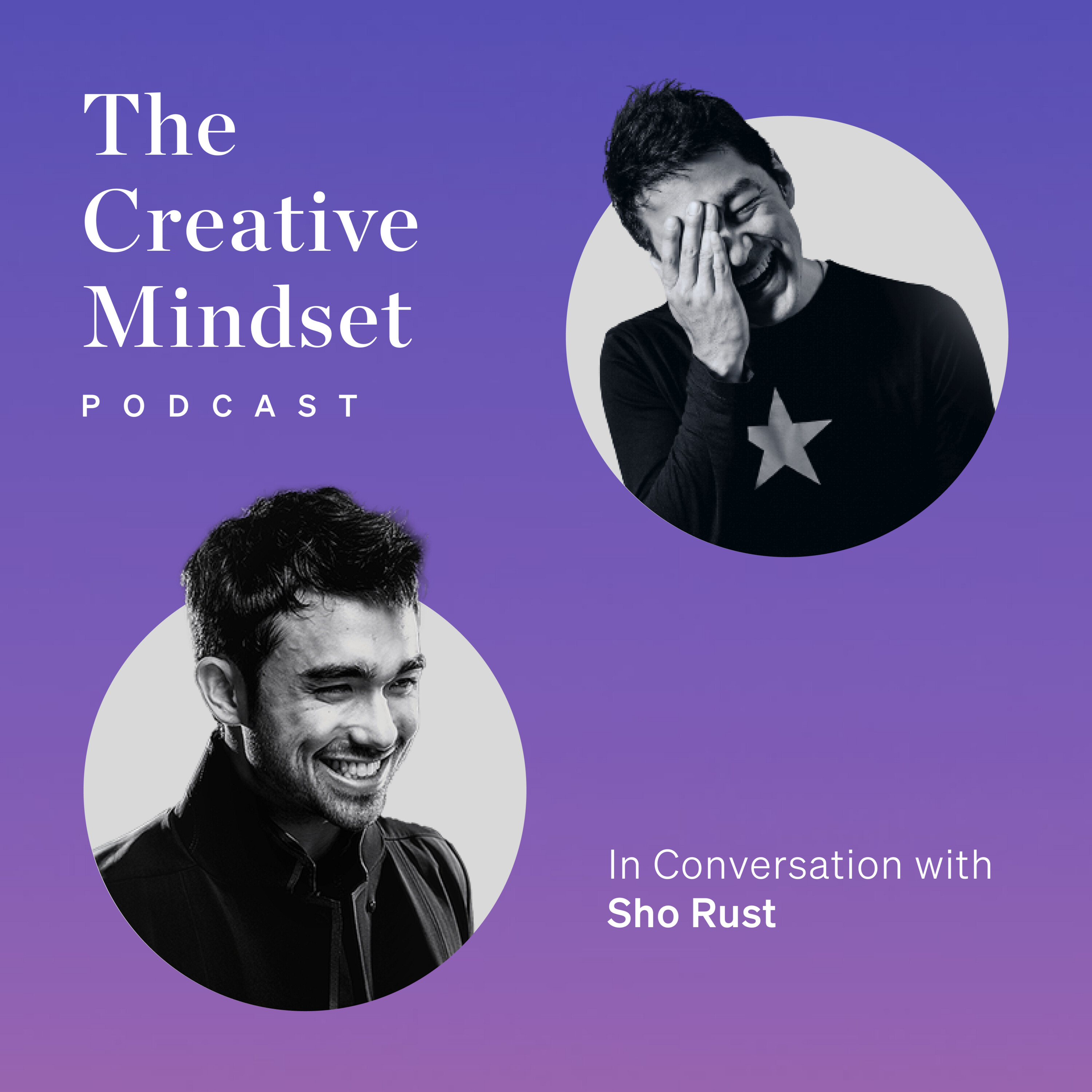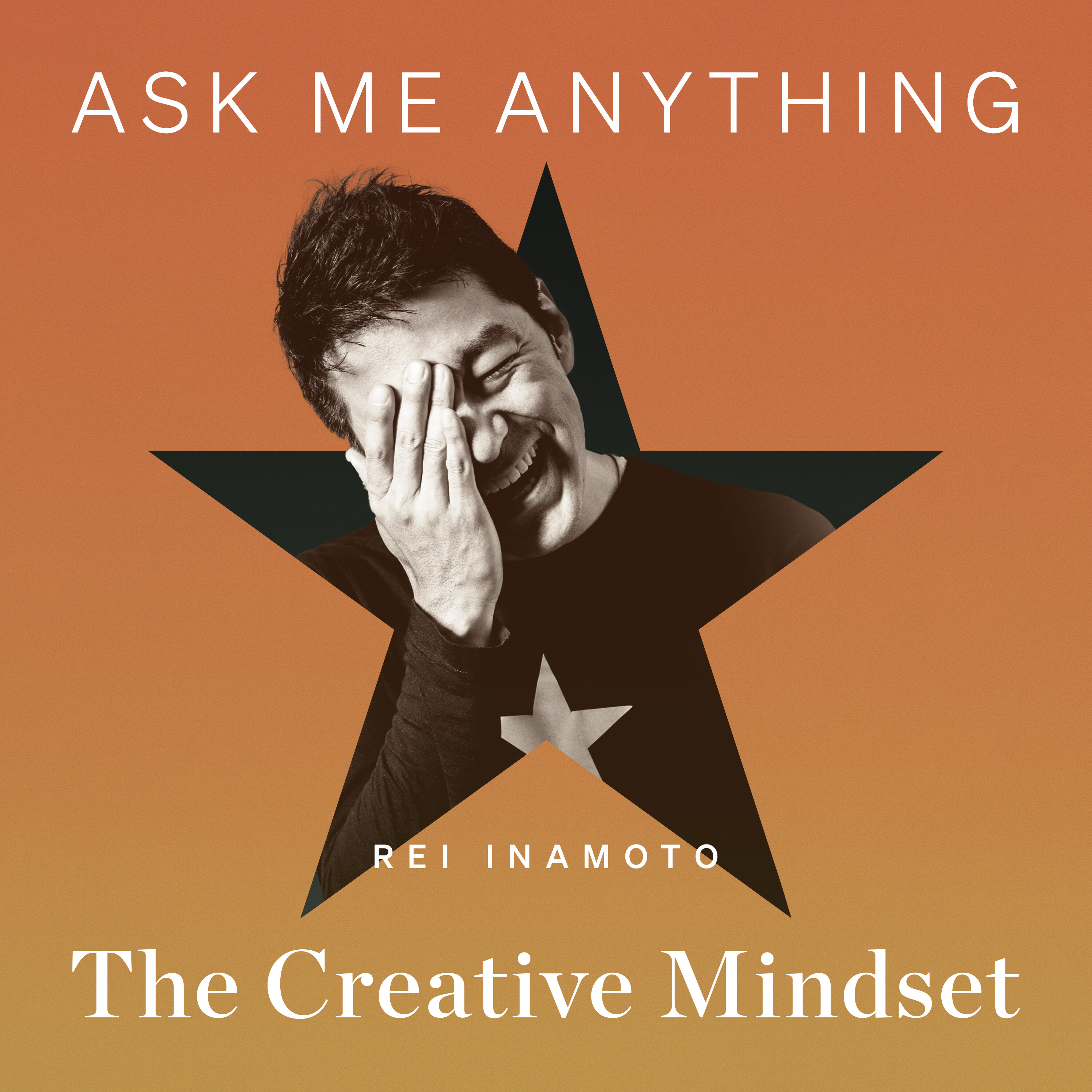This is Rainomoto's podcast, The Creative Mindset.
Hi everyone. Welcome to The Creative Mindset, a podcast about what the future holds at the
intersection of creativity and technology. I am Rainomoto, the founding partner of I&CO,
a global innovation firm based in New York and Tokyo. AI has been the topic of interest for
many people in the last 18 months, not just in the creative industry, but also in various industries
and how it might impact the way we work as human beings. Since the explosion of tools like ChatGBT,
MidJourney, and other generative AI tools, there have been many attempts at leveraging AI in the
creation of content. Today's guest is Sho Rust, the founder and CEO of Sho.AI, a tailored AI
platform designed to supercharge your content creation process. The Sho.AI platform helps
companies reduce the time and money spent on building a brand. With access to cutting-edge
technology and their experts' valuable knowledge about branding, businesses can succeed with
reduced costs. Unlike many of the guests we invite to our podcast, I didn't know who Sho was
or about his company Sho.AI until only a few months ago. I happened to see him have a conversation
with another design entrepreneur on YouTube and found what he was trying to build fascinating.
Without expecting a reply, I randomly reached out to Sho over LinkedIn. To my pleasant surprise,
he replied back within a day and was happy to connect with me. Born to a Japanese mother and
an American father, he grew up in Japan until he was 14 and then moved to the U.S. to go to high
school and college. Unlike many tech entrepreneurs, he studied design at the Art Center College of
Design in Pasadena, which is considered to be one of the top art and design schools in the U.S.
In some ways, similar backgrounds in that both he and I were born in Japan. Both he and I came to
the U.S. when we were in high school. Him a little earlier than me, obviously. He's also much younger.
He and I come from different generations, but I have to say I felt this keen connection with
an individual who was interested in both technology and creativity. In part one of
my conversation with Sho, I asked him quite a bit about how, as a kid who liked art and a student
who studied design, became interested in entrepreneurship and what his journey has
been like before and after starting a company. So, let's get started. Sho, good to see you.
Good to see you too, Ray. I'm really excited to be here. Thank you.
Yeah, thanks for joining. Where do we find you now?
So, right now, physically, I'm located in the middle of the United States,
in Cape Girardeau, Missouri. But I'm running a startup with a team all over the place. So,
you'll also find me in Paris, Los Angeles, New York at any given time.
Oh, wow. Excellent. You know, your entrepreneurship background is a little different from a typical
technology startup entrepreneur. So, if you could give how you grew up and how you got
yourself into what you're doing now. Yeah, absolutely. Well, first, I grew up
in Japan, where I had more of an attraction to traditional art, drawing and different things
like that. Eventually, I came to the U.S. when I was about 13, 14, and I started to get into design.
This is when Steve Jobs, the first iPod and the clamshell MacBook was starting to come out.
And then I saw a beauty in what they were able to create there. It was almost like magic for me
when they're presenting these new features. And then oftentimes, Apple did a really good job
of talking about benefit too. And so, as I was trying to find purpose in life, I saw a lot of
purpose in building some of that magic where I can help and benefit more people. And then so,
even though I found a lot of success with art in high school and middle school and different
things like that, I decided to switch over to design. From design, I actually ended up working
at B-Real, the number one production company at the time. I was working on the Avengers film
with Marvel. And then I was working on like Iron Man assets and different things like that.
And then when I was working on those assets, in the back of my mind, I was thinking,
this is possible. Like to ask a computer to repaint an object red or a hot rod color or
different things like that. It was possible. And so, I started to look into that. And even my
final project in college was a book designed completely using machine learning and got
conditionals and some automation, some other things like that too. First of all, what kind
of tools to automate and what was that like? Yeah. I was using a lot of tools that were made
available to me. And I still do today with like, I use the models from Google, Microsoft,
and these different things. At the time, I was using some from like IBM. They had like
cool sentiment analysis tools and different things like that where I was able to classify
certain pieces of content. And then once I was able to classify the content, I was able to design
for it. But I was coding a lot of it to be honest with you at the time. I grew up coding quite a
bit. Around like 12, 13, I needed to create my first e-commerce website for my first t-shirt
brand. I guess everyone has a t-shirt brand, right? But I just kept on coding. And then
coding for me was just like another paintbrush or a piece of charcoal or different things like that.
And because I grew up kind of developing those skill sets really quickly around like traditional
art tools, coding also kind of came natural to me as well. And then so when my teacher told me,
hey, I need you to design a 250-page book by the end of the term. In my head, my silly brain was
like, it's going to be easier for me to teach a computer to do that. So at the time, I created
a book called The Oracle of Omaha or something like that. And I pulled data from Warren Buffett's
annual reports. And so I trained the model on annual reports essentially, and then had it kick
out a book for me. But the cool part was because I was generating the book, I can tweak the book
for different use cases. So depending on the user, the reader, the book would be tailored to them.
So they would get a special edition book printed and sent to them. And even like at the time,
this was still a school project, but it was a fully functioning website that you can order
the book from and like sent to smart warehousing. I just love to figure out how to make things work.
It probably goes back to my days with Legos, right? It always goes back to Legos.
We all play with Legos.
Exactly, exactly. Once I got that bug, and then I started to see the advantages of that.
So this was when you were a student.
Still a student at this time.
Yeah. I mean, way before, you know, generative AI was the world that we all know, right?
Yeah. This is like 2011, 2012 time. So this is over almost a decade ago, about 10 years ago.
Yeah.
They're like rated number one on Forbes, even above Google in terms of like work life.
So you studied design at our center of college when you were a student.
Yes.
And then you went to B-Real, which is one of the top-notch production companies,
digital production companies in the world.
Yeah.
Yeah. You worked there as a designer, correct?
Yes. I worked there as a designer. Yeah.
Yeah.
First I was an intern, but the cool part was, was that Facebook went public at that time.
And then they literally, they hired like everybody in the office.
So I got really lucky. And then I landed with like the Google project,
the Avengers project, like a few other projects.
We actually had this really cool project called Schedule Some Help.
It was basically like an AI interface, but we were tricking it. It was all conditionals,
where like if a person mentions this keyword, like trigger this video.
But basically you could talk to the system.
It would trigger one of like 600, 700 videos that we made.
And we created this crazy decision tree in terms of like what video to present to them.
But people would be able to ask for help.
I'm like, Hey, I don't know how to fix my ceiling light.
And a video would trigger teaching them how to fix their ceiling light.
But it's actually pretty wild how I continuously throughout my career
kind of ended up with these kind of AI-like projects.
Even though it wasn't generative AI at the time,
there are elements of the thinking that I still apply to my work today.
Then found your way to BCG.
Yes. And then I was actually part of BCG Digital Ventures,
which was like a skunkworks version of BCG.
BCG, they were like, Hey, we need to create a kind of a killer team
that's able to come up with new ventures very quickly
to kind of help corporations compete against these new disruptive startups.
So essentially, instead of having a startup disrupt your business,
we come in and we work with you to come up with a startup that would disrupt you.
And at least you own part of the company that disrupts you.
But startups like speedboats compared to cruise ships
are able to navigate waters differently.
And then corporations wanted to do the same thing.
So at BCG, that's what I did.
And then while I was there, I was head of brand at first.
So I redid their logo, their website.
And then during that time that I was there, I think three or so years,
we grew from like 50 to 800 people in that one division.
Wow.
It was awesome. It was really, really cool.
I even got the opportunity to spend a lot of time in Japan.
I love that time in my life because Japan is great.
Japan with an expense account is even better.
Even better, yeah.
Yeah, even better because there's so much good food that you get to enjoy.
But I got to help start the office in Japan.
And then while I was there at DV,
a lot of the things that I was doing was kind of similar to what I do today.
It was a lot of brand creation and management.
That's where GPT-1 really came in for me, actually.
Yeah. Okay. Just to slow down a bit.
I totally understand what you're talking about,
but some of the listeners might not understand.
So I want to break these down.
So when you say design systems,
those are things like logos, colors, typefaces, images that a brand...
Let's just take, say, McDonald's as an example,
gigantic or Coca-Cola as an example.
Oh, you know what? Let's take McDonald's as an example.
The arches, the red colors, the menus, typefaces,
and they're in 100, 200 different countries.
They have so many franchise owners who are managing their stores.
Every time, let's say, a new store opens up,
the new owner has to implement the, quote-unquote,
the brand system into their store and into their business
so that those things look consistent with the master brand, right?
Yes.
But in a tiny city in the U.S. or in Europe or in Asia,
that the business that they operate is consistent
with thousands of thousands of other McDonald's stores.
Yes.
And what you were doing,
let's say a big corporation starts a new business like that,
and when they need to scale that,
people have to do those things manually,
create the guidelines, and implement those guidelines.
But that's when you started to think about,
hey, could this be automated?
Is that a fair summary?
Absolutely.
I was always obsessed with the fact that I would deliver something
and then it was still kind of static.
Like all those components that you just mentioned,
the mobile header or the logo or business cards,
social media assets, UI chat systems,
customer portals in the back end,
whatever it was,
whenever you wanted to issue a change to your brand,
the bigger that the system got,
the less adaptable it became,
the less alive it felt, essentially.
And then that's where I saw a huge opportunity with AI.
The other big issue too was that oftentimes
these global brands were working across
multiple different languages and cultures.
And then how you present the brand, for example, in Japan,
is very different than how you present the brand in the US.
Even from what you include from a marketing copy perspective.
For example, in Japan, people read a lot more
about features and how the system works.
Whereas the United States,
they just really want a clear benefit of like,
hey, you'll lose weight 10 times faster in five days or something.
Or in Japan, they want to actually see the regimen
and what they're getting and very specific things.
But a design system had to consider those things.
And then I was also a little bit overwhelmed too,
where like, let's say that you're delivering
a 250 page playbook on a certain task.
To deliver that in multiple different languages
really quickly was a task that I was really struggling with.
Translators at the time,
there were a few translators with good APIs and stuff like that,
but they didn't take in a lot of the cultural nuances.
They were translating directly.
And then so that was problematic.
GPT-1 at the time was being discussed
and then research papers were being published
and different things like that.
And I started to really kind of deep dive into those research papers.
So this is like around 2018, GPT-1?
Yeah, this is probably 2017.
17, okay.
So still even before Chad GPT came out.
Oh yeah, yeah.
This is still four or five years before Chad GPT.
So I started experimenting with GPT-1,
some of those language models.
And then I showed a prototype to a few of my friends at DCG
and they essentially quit their job the next day.
They're like, oh, this is a future brand generation
and management, right?
And this has huge application,
like as this thing scales, we can see individuals.
We're starting to see that now.
We're starting to see individuals
that are training a language models like Chris Doe on themselves.
Like there's gonna be personal versions of this as well in the future.
They saw it and then so they quit their jobs the next day,
which kind of gave me the green light to quit my job as well.
And then I was able to...
Well, I didn't have to convince anybody.
They all willingly moved from Paris, New York, Los Angeles,
living on the beach, having cushy jobs at BCG
to actually the first year we operated out of my grandma's basement
in Cape Girardeau, Missouri.
No way, yeah.
I took all these guys that were like making crazy money,
doing really, really well,
and then moved them out of their beach.
So you quit BCG, you moved back to Missouri.
Yes.
Yeah.
And you convinced other friends from BCG to join you.
Yes.
Yeah.
And did you need to raise money to do that?
Or were you making enough money
and you had enough savings from your cushy jobs, like you said?
Yes.
And were able to bootstrap.
Yes, exactly.
So for like the first full year or like a year and a half or so like that,
we all had enough money to kind of bootstrap.
Wow.
Okay.
Yeah.
And then that was part of our strategy too,
was like the first year living out of my grandma's basement,
we didn't have to pay rent.
Yeah.
And then it's a bit of a sacrifice, you know, that you have to make.
At the time when you're first starting a company,
there's still a lot of things that you need to figure out.
And then when you take money, you immediately have to accelerate.
Right.
They want you to scale, they want you to hire,
and they want you to do a lot of these different things.
Yeah, yeah.
We wanted to kind of get past that point first,
where we knew exactly where we wanted to build
before we like partnered with someone strategic.
Yeah.
How many founders were there?
How many people did you start the company with?
There were four of us at the time.
Two of them are no longer with us.
One was just a culture difference.
One of the engineers didn't jive well with the rest of the team.
The other one was just,
he was a really good sales guy from sales and project management.
But year one, we didn't have a product yet.
Oh, I see, I see.
So it wasn't the right time to have a salesperson.
Yeah.
And then he was also at the time getting married
and having a kid and different things like that.
Oh, I see.
And then he didn't have the financial flexibility that the rest of us had.
Yeah.
And then so that was a little bit of a struggle too.
So, you know, you're like a year or so into starting a company.
You started with four people.
And just assuming you're still in your 20s
and the first company that you're starting,
what was going through your head?
I will say emotionally from like a journey perspective,
I really underestimated the past six years.
Yeah.
I wouldn't wish it on my biggest enemies.
You know, it was really tough.
The first year though, frankly,
I was still riding off of the wave from the BCG days.
They do a good job kind of training you to be a good athlete,
like go out there and like tackle the work.
And that's what I did.
And then there was still like a lot of excitement at the very beginning.
I think first year you still have like a little bit of a honeymoon stage.
But then you start talking to customers and stuff like that.
And then every single startup,
I think any good startup will kind of go through this
is that you do pretty good on like pitches
and like you present it to your friends and family
and investors and people seem to resonate well.
And then you show it to a few customers
and you get knocked out for the first time.
And then like how you get up and then face those things
was kind of year two for me.
But actually stepping back year one,
there was a lot of excitement, a lot of joy around it.
A little bit of a fear of the unknown.
But in the back of my head,
I didn't really feel like I had a lot to lose.
Because, you know, worst case scenario,
I go back to BCG or like I go back to one of those companies.
They would probably value me even higher
for even attempting to start to try to run a company.
I saw that as like a green light to just keep moving forward
and not worrying about too much.
Now, when you're team members, you start to realize,
oh, you know, a team member is struggling
or they're having like a little bit of a mental crisis
because like COVID and different things like that.
Those types of things.
And like, it's almost like losing family members
or losing friendships and different things.
Like that's the hardest.
If you have someone on your team
that you really like as a friend,
but they're just not performing,
those leadership things was the hardest thing
for me to overcome and learn.
If you were to start the company
knowing what you've gone through,
what would you have done differently?
Simplify, simplify, simplify.
I know as a designer, that sounds ridiculous.
With a startup, I think it's very easy
to overcomplicate things.
To try to solve a problem by just like adding to the solution
instead of like reevaluating the problem.
The solution.
A lot of people are talking about like first principles
and stuff like that now.
And like rethinking everything from the ground up.
And I think that's really applicable to startup world.
The other thing too, I listened to many people
instead of focusing on just a really clean
single user experience for like
a single ideal customer profile.
As you talk to so many people,
whether it's investors or different types of customers,
to find that, it's very easy to start
Frankensteining your product.
Especially if you have like a really capable team like I did.
For example, we ended up building 600 features
in our product.
We could have got away with maybe 30, maybe less.
Like if you look at ChatGPT,
that was just one feature that we had.
Our platform, we had ChatGPT before ChatGPT came out
like nine months before ChatGPT.
And I was trained on all your knowledge base.
And then people probably would have flocked more
to our product if we focus on that one feature.
Instead of saying, hey, you could use chat.
You could also use image generation.
You can also build brand guidelines.
You could generate design system or generate social.
It starts to overwhelm the user.
And then so like, especially going into next year,
we're really focusing on specific use cases.
I see, I see.
Yeah.
When did you, after you started the company in 2017, 2018,
how long did it take for you to start generating revenue?
And what was the first big break?
So our strategy was to partner with agencies,
especially at the time we didn't have many salespeople.
But when you sign an agency,
our first big break was honestly when we signed an agency
and then they bought like a bulk deal of like 30 platforms
for all their customers that they could use.
Yeah.
Because of our pricing at the time,
we were very much an enterprise product at the time.
That was 30 grand a month.
It's a pretty good size chunk.
Right.
And then, so that was a pretty good like,
hey, like we're actually making real money now.
Like this isn't $600 here and there.
We can sell one deal and then make,
like pay for three salaries.
And if we continue to do this,
our company will continue to grow pretty well.
When you say a platform,
it means that let's say a design agency is working with,
again, we'll just use an example, Pepsi, right?
That will be a platform that you would have the agency
buy from you on a monthly subscription basis.
And let's say that design agency has 10 clients
and they would have a platform per client,
you know, a Pepsi, a McDonald's, a Nike,
whoever that might be.
And they would use your tool and per platform
or per client that they have,
they would subscribe to your service for $30,000 per month.
And then they would manage that,
those assets for that client,
which would be $30,000.
Sounds like a lot of money,
but instead of clients having to hire 10 people,
20 people, 30 people to do that,
they can only, they can just hire that agency
to manage your tool and just pay for that subscription.
Exactly, exactly.
Yeah.
At BCG, your numbers were close to like $100 million,
because that's BCG, that's,
they could charge whatever they want, right?
But that's what they were charging
for these intricate systems.
It's like a super weapon from a branding perspective.
Yeah.
And I was like, oh my God,
like startups and different things like that
are going to have a hard time competing
if like the only companies are these big tech companies
that can pay dish out crazy amounts of money
to hire people like me to build them custom systems.
Like there is no AI agnostic platform out there
that we can train AI models and our team
on our entire knowledge base.
I'm sure like more of them will come out next year.
I'm waiting, I'm excited to see more competition.
But right now the option is they build it internally
or they use our platform.
Right, right.
How long from day one of you starting the company,
you know, moving to your grandma's basement
and you weren't making any money at the time,
but how long did it take to get to having
the first paycheck from a client?
We were probably looking at first paycheck
about month three.
Oh wow.
So that's pretty quick.
Yeah, yeah.
I think our first customer was NZXT,
the PC gaming company.
They were paying us pretty good amount
for the first kind of MVP.
Now we replaced that MVP about eight to nine months in,
but we really focused on,
hey, can we get something out there immediately
to start getting a customer feedback loop going?
That was really important for us to do.
We didn't want to make assumptions
about anything that we did.
I see, I see.
But that can also be dangerous.
Sometimes you do want to prescribe something
to the customer and not let them kind of
let you know what they want.
Right, right, right.
That was part one of my conversation with Sho Rust,
the founder and CEO of Sho.ai,
a tailored AI platform designed to supercharge
your content creation process.
The main theme today was AI
and entrepreneurship of a designer.
My three key takeaways
from my conversation with Sho today were,
number one, academic pedigree isn't the only
deciding factor for one's career.
Number two, importance of making.
Number three, opportunities are all around us.
It's just a matter of noticing them.
So takeaway number one,
academic pedigree isn't the only deciding factor
for one's career.
There's definitely a tendency among investors
to look at colleges where these entrepreneurs study
and decide whether to invest in them or not.
But at the same time, like Sho,
who went to a design college,
however, he was interested in programming on his own.
And as I found out from my conversation with him today,
even at a pretty young age in high school,
he was interested in using his interest,
passion, talent, and skill to start a business.
He talked about a t-shirt business that he started
when he was a teenager.
So there was a fire and spark in him to begin with,
even when he was a teenager,
let alone before starting a company.
At the same time, the fact that he went to a design school
and was actively incorporating technology
into his process,
I would say he's a classic DIY, do-it-yourself entrepreneur.
So my conversation with Sho was yet again,
a good reminder in the creative mindset of somebody
who has this passion and spark in them,
as well as curiosity to drive them forward.
Academic pedigree isn't the only deciding factor
for one's career.
And in fact, I might even say that academic pedigree
isn't the key deciding factor.
Passion and curiosity in you,
your motivation to pursue and actually make things happen
are the more important deciding factors for one's career.
Key takeaway number two, importance of making.
So this is a good segue from the first point
that I was making in my conversation with Sho.
And this is a common theme that I find
in many of my conversations
with other creative practitioners.
It's one thing to come up with an idea,
but it's another thing to bring that idea to life.
And that is more important than the idea itself
or just coming up with an idea.
Ideas are cheap, but executions
are what's really, really hard.
This reminded me of the conversation
that I had with Paola Antonelli.
She was one of the first guests
that I had on this show almost a year ago.
The quote that Paola shared with me
was, ideas, a dime and a dozen.
It's an implementation that comes.
This is a quote by an American entrepreneur
of the 20th century, Mary Kay Ash,
who built Mary Kay Cosmetics in the US.
The conversation with Sho
was yet another reminder of the same idea
that it's one thing to come up with an idea,
but it's actually bringing that idea to life
is what's really hard.
It's been about almost six years
since he started the company.
And he was an early adapter of AI
in the context of design.
Back in 2018, GPT, the idea or the term GPT
was starting to make its way into businesses,
but it was among very few people
who were into using large language models,
machine learning, and AI to make something.
He was an early adapter of generative AI
and realized the potential of it.
And not only did he start experimenting
with that idea,
but spend the time, energy, and money on his own
to turn the idea into a company,
which is Shodo AI,
and providing that platform to many, many creators.
So point number one, importance of making.
Bringing an idea to life is more important
than coming up with an idea.
Key takeaway number three,
opportunities are all around us.
It's a matter of noticing them.
As you heard from my conversation with Sho,
the reason why he started Shodo AI,
or even before that,
the reason why he built a tool to help with his work
was when he was working at a consultancy
and found himself doing a task that repeated
and could be time consuming.
And oftentimes he was given those tasks
by his superiors at the last minute,
which made him essentially stay all night
to execute those requests manually.
He then turned that frustration into an opportunity,
turned that into a tool,
and then turned it into a company.
Had he not spent the time
to turn that frustration into a solution,
we wouldn't be having this conversation
and he wouldn't be running a company.
So key takeaway number three,
opportunities are all around us.
It's a matter of noticing them.
Kudos to Sho for noticing that little frustration
and turning that into an opportunity.
So to summarize,
academic pedigree isn't the only deciding factor
for one's career.
In fact, curiosity is the key factor.
Number two, importance of making.
Bringing an idea to life is more important
than coming up with an idea.
And number three, opportunities are all around us.
It's a matter of noticing them.
That was part one of my conversation with Sho Rust,
the founder and CEO of Shodo AI,
a tailored AI platform designed to supercharge
your content creation process.
If you're listening to this on Spotify,
there's a Q&A field,
so please do send us your questions and comments.
And if you like our podcast,
please leave us a five-star rating.
We'll be so grateful.
